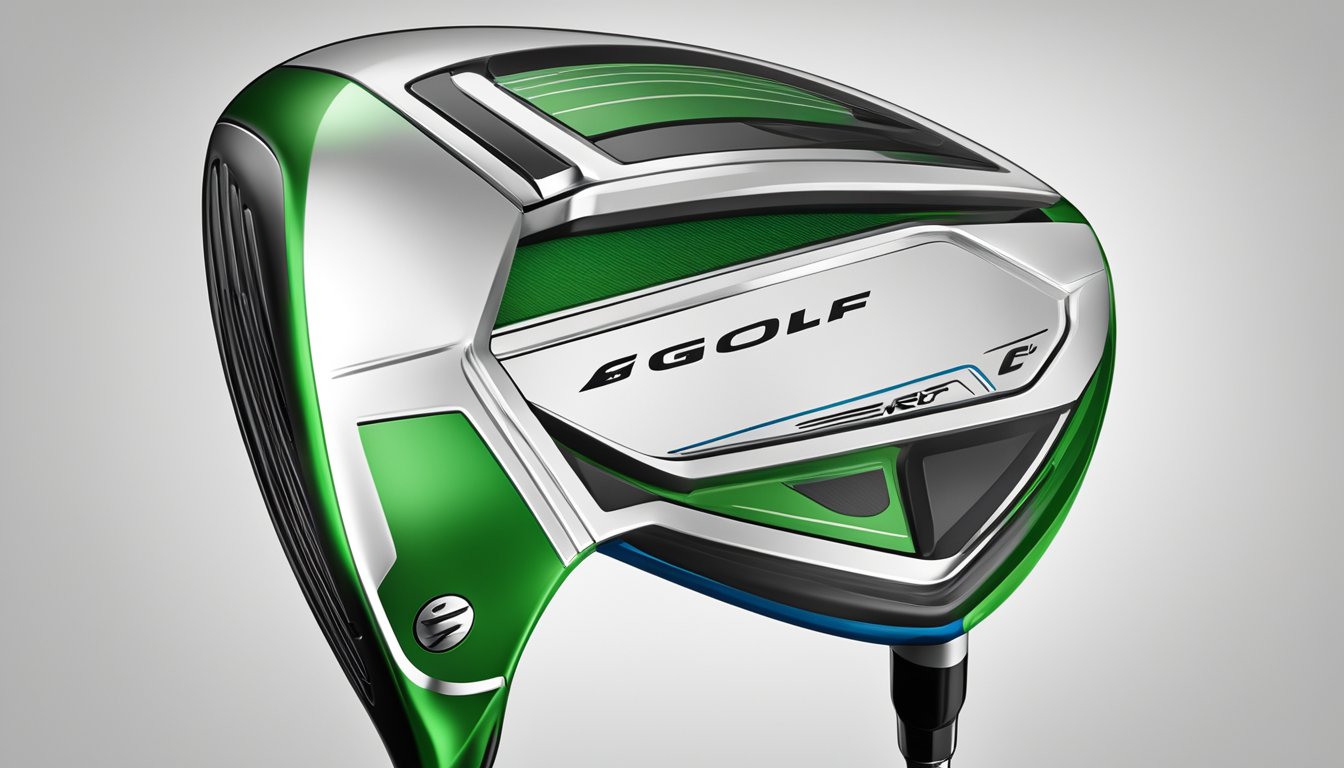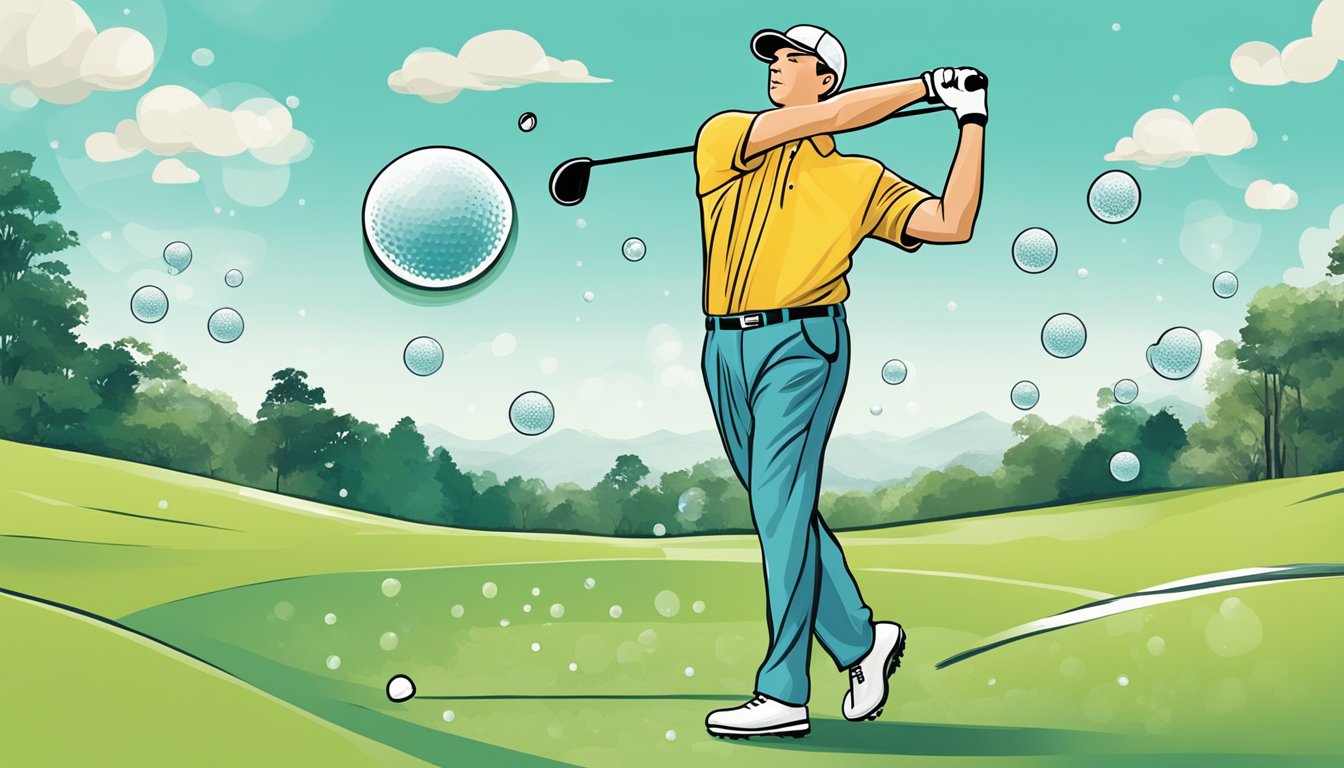If you’re a mid handicapper, you know how important it is to have the right golf driver in your bag. A good driver can make a huge difference in your game, giving you more distance and accuracy off the tee. But with so many options on the market, it can be tough to know where to start. In this article, we’ll take a look at some of the best golf drivers for mid handicappers, so you can find the one that’s right for you.
When it comes to golf drivers, there are a lot of factors to consider. Do you prefer a more forgiving driver that will help you hit straighter shots, or are you looking for a driver that will give you more distance? What kind of swing do you have, and what’s your budget? In this article, we’ll cover all of these topics and more, so you can make an informed decision when it comes to choosing the best golf driver for your game.
Key Takeaways
- Choosing the right golf driver is crucial for mid handicappers looking to improve their game.
- There are many factors to consider when choosing a driver, including forgiveness, distance, swing type, and budget.
- By doing your research and considering your individual needs, you can find the perfect driver to take your game to the next level.
Understanding Golf Drivers
https://www.youtube.com/watch?v=azpfXL2et2Q&embed=true
If you’re a mid handicapper looking to improve your game, then choosing the right golf driver is essential. A golf driver is the largest club in your bag, and it’s designed to hit the ball the farthest. In this section, we’ll take a closer look at golf drivers and what you need to know to make an informed purchase.
Golf Driver Components
A golf driver has three main components: the head, shaft, and grip. The head is the part of the club that comes into contact with the ball. It is typically made of titanium or other lightweight materials. The shaft is the long, thin part of the club that connects the grip to the head. It is usually made of graphite or steel. The grip is the part of the club that you hold onto.
Golf Driver Features
When shopping for a golf driver, you’ll come across terms like loft, hosel, and adjustability. Loft refers to the angle of the face of the club, which affects the trajectory of the ball. A higher loft will produce a higher ball flight, while a lower loft will produce a lower ball flight. The hosel is the part of the club where the shaft connects to the head. Some drivers have an adjustable hosel, which allows you to change the loft and lie angle of the club. Finally, some drivers have adjustable weights or other features that allow you to customize the club to your swing.
Golf Driver Materials
Golf driver heads are typically made of titanium, which is lightweight and strong. Some drivers also feature a carbon crown, which further reduces weight and can improve the club’s performance. The shaft of the club is usually made of graphite, which is lighter than steel and can help increase swing speed.
Overall, choosing the right golf driver can make a big difference in your game. Consider your swing speed, ball flight, and other factors when selecting a club, and don’t be afraid to experiment with different options.
How to Choose the Best Golf Drivers for Mid Handicappers
https://www.youtube.com/watch?v=3TzKVLTKrqc&embed=true
Choosing the right golf driver can be a daunting task, especially if you’re a mid handicapper. With so many options available in the market, it can be overwhelming to decide which one is the best for you. Here are a few tips to help you choose the best golf driver for your skill level and handicap.
Consider Your Skill Level and Handicap Level
When choosing a golf driver, you need to consider your skill level and handicap level. If you’re a mid handicapper, you need a driver that can help you improve your game. Look for a driver that is forgiving and has a large sweet spot. This will help you hit the ball straighter and farther.
Look for Drivers Designed for Mid Handicappers
There are many drivers in the market that are specifically designed for mid handicappers. These drivers are designed to help you hit the ball straighter and farther, even if you don’t have the best swing. Look for drivers that have a low center of gravity, which will help you get the ball in the air easily.
Test Different Options
Before you buy a golf driver, it’s important to test different options. Go to a golf store and try out different drivers. This will help you get a feel for which driver is the best for you. Pay attention to how the driver feels when you address the ball, how it sounds when you hit the ball, and how far the ball goes.
Consider the Cost and Value
Golf drivers can be expensive, so it’s important to consider the cost and value. Look for drivers that are within your budget, but don’t compromise on quality. A good golf driver can last you for years, so it’s important to invest in a driver that will help you improve your game.
In summary, choosing the best golf driver for mid handicappers requires you to consider your skill level and handicap level, look for drivers designed for mid handicappers, test different options, and consider the cost and value. By following these tips, you’ll be able to find the right driver that will help you improve your game and enjoy your time on the golf course.
Key Features to Look for in a Golf Driver
As a mid handicapper, you want a golf driver that can help you improve your game. There are several key features that you should look for when choosing a driver that will help you achieve your goals.
Distance and Performance
Distance and performance are two of the most important factors to consider when choosing a driver. You want a driver that can help you hit the ball farther and with more accuracy. Look for drivers that have a low center of gravity, tungsten weight, and carbon fiber construction to maximize distance and performance.
Forgiveness and Stability
Forgiveness and stability are also important features to consider when choosing a driver. You want a driver that has a high MOI (moment of inertia) to help keep the clubhead stable and reduce twisting on off-center hits. A driver with a large sweet spot will also help you achieve maximum forgiveness.
Spin and Ball Flight
Spin and ball flight are critical factors to consider when choosing a driver. You want a driver that can help you achieve the optimal spin and ball flight for your swing. Look for drivers with adjustable loft and lie angles to help you fine-tune your ball flight. Drivers with twist face technology can also help you achieve a straighter shot shape.
Weight and Aerodynamics
Weight and aerodynamics are also important factors to consider when choosing a driver. A lightweight driver can help you achieve a faster swing speed, while a driver with an aerodynamic profile can help you achieve maximum clubhead speed. Look for drivers with draw bias or fade bias to help you achieve your desired shot shape.
Overall, when selecting a driver, it is important to consider your personal preferences and playing style. By keeping these key features in mind and trying out different drivers, you can find the perfect driver that will help you improve your game.

Top Golf Driver Models for Mid Handicappers in 2023
« Proper maintenance and care for your golf glove: tips for cleanliness and longevity
Wilson Infinite Putter Review: A Comprehensive Look at the Latest Model »
https://www.youtube.com/watch?v=cEk-UL6A2Wo&embed=true
As a mid handicapper, you want a driver that will help you hit longer and straighter drives, but without sacrificing forgiveness and control. In 2023, there are a number of golf driver models that are designed specifically for mid handicappers like you. Here are some of the top models to consider:
TaylorMade Stealth 2 Driver
The TaylorMade Stealth 2 Driver is a new driver that has been designed with mid handicappers in mind. It features a sliding weight that allows you to adjust the center of gravity of the clubhead, which can help you hit straighter shots. The driver also has a sound and feel that is highly rated by golfers, making it a great choice for those who want a driver that is both forgiving and enjoyable to use.
Callaway Paradym Driver
The Callaway Paradym Driver is another great option for mid handicappers. It features a stable driver head that helps you hit straighter shots, as well as a sliding weight that can be adjusted to help you hit longer drives. The driver also has a sound and feel that is highly rated by golfers, making it a great choice for those who want a driver that is both forgiving and enjoyable to use.
Ping G425 Max Driver
The Ping G425 Max Driver is a new driver that has been designed with forgiveness in mind. It features a large clubhead that is highly forgiving, as well as a sliding weight that can be adjusted to help you hit longer and straighter drives. The driver also has a sound and feel that is highly rated by golfers, making it a great choice for those who want a driver that is both forgiving and enjoyable to use.

Titleist TSi2 Driver
The Titleist TSi2 Driver is a popular choice among mid handicappers. It features a large clubhead that is highly forgiving, as well as a sliding weight that can be adjusted to help you hit longer and straighter drives. The driver also has a sound and feel that is highly rated by golfers, making it a great choice for those who want a driver that is both forgiving and enjoyable to use.
Cobra Aerojet Driver
The Cobra Aerojet Driver is a forgiving driver that is designed for mid handicappers. It features a large clubhead that is highly forgiving, as well as a sliding weight that can be adjusted to help you hit longer and straighter drives. The driver also has a sound and feel that is highly rated by golfers, making it a great choice for those who want a driver that is both forgiving and enjoyable to use.
Wilson Dynapower Carbon Driver
The Wilson Dynapower Carbon Driver is a great option for those who want a forgiving driver that is also affordable. It features a large clubhead that is highly forgiving, as well as a sliding weight that can be adjusted to help you hit longer and straighter drives. The driver also has a sound and feel that is highly rated by golfers, making it a great choice for those who want a driver that is both forgiving and enjoyable to use.
Overall, these are some of the best drivers for mid handicappers in 2023. They all offer forgiveness, stability, and adjustability, making them great options for those who want to improve their game. Whether you are a beginner or an experienced golfer, these drivers can help you hit longer and straighter shots off the tee.
Conclusion
https://www.youtube.com/watch?v=ErHmFhA1_mA&embed=true

In conclusion, finding the best golf driver for your game can make a significant difference in your performance on the course. As a mid handicapper, you need a driver that offers a balance of forgiveness, distance, and control.
When it comes to golf clubs, the brand is not as important as the features it offers. The driver must have a large sweet spot to minimize mishits, and the shaft must be the right length and flex to fit your swing.
There are many fairway options available for mid handicappers, and it’s essential to choose one that suits your game. You can opt for a driver with an adjustable loft to fine-tune your launch angle, or a driver with a low center of gravity for more distance.
Value is also a significant consideration when choosing a driver. You don’t want to overspend on a driver that doesn’t improve your game. However, investing in a high-quality driver can pay off in the long run.
Overall, the best way to find the perfect driver for your game is to try out several options and see which one feels the most comfortable and natural to you. Keep in mind the features that are most important to you, and don’t be swayed by marketing hype. With the right driver, you can take your game to the next level and enjoy more success on the course.
Frequently Asked Questions
What are some of the most forgiving golf drivers for mid handicappers?
If you’re a mid handicapper, you may be looking for a driver that is forgiving and can help you hit straighter shots. Some of the most forgiving drivers for mid handicappers include the TaylorMade Stealth 2 Plus Driver, the Titleist TSR3 Driver, and the Ping G430 LST Driver. These drivers are designed to help you hit straighter shots even if you don’t hit the sweet spot every time.
What are the best cheap drivers for mid handicappers?
If you’re on a budget, there are still plenty of drivers that can help you improve your game without breaking the bank. Some of the best cheap drivers for mid handicappers include the Wilson Dynapower Carbon Driver, the Tour Edge Exotics E723 Driver, and the Callaway Rogue ST MAX Driver. These drivers are all priced affordably and can help you hit longer, straighter shots.
What is the best Titleist driver for mid handicappers?
Titleist is known for making some of the best drivers in the game, and if you’re a mid handicapper, you may be wondering which one is right for you. The Titleist TSi2 Driver is a great option for mid handicappers, as it is designed to help you hit longer, straighter shots. It has a larger sweet spot than previous models, which can help you hit more consistent shots even if you don’t hit the sweet spot every time.
What is a mid handicap golfer and what driver is best suited for them?
A mid handicap golfer is someone who typically shoots in the 80s or low 90s. They are not quite a beginner, but they are not yet an expert either. For mid handicappers, a driver that is forgiving and can help them hit straighter shots is usually best. Some good options include the PING G425 MAX Driver, the Callaway Golf Rogue ST MAX Driver, and the TaylorMade SiM 2 MAX Driver.

What are some of the best drivers for senior mid handicap golfers?
Senior mid handicap golfers may have different needs than younger golfers. They may need a driver that is lightweight and easy to swing, but still forgiving and capable of hitting long, straight shots. Some of the best drivers for senior mid handicap golfers include the Callaway Big Bertha B21 Driver, the TaylorMade SIM2 Max D Driver, and the Cobra RadSpeed XB Driver.
What are some of the best drivers for single digit handicappers?
Single digit handicappers are more advanced golfers who typically shoot in the 70s or low 80s. They may need a driver that is more precise and capable of hitting longer shots than drivers designed for mid handicappers. Some of the best drivers for single digit handicappers include the Titleist TSi3 Driver, the TaylorMade SIM2 Driver, and the Callaway Epic Max LS Driver. These drivers are designed to help advanced golfers hit longer, more accurate shots.










